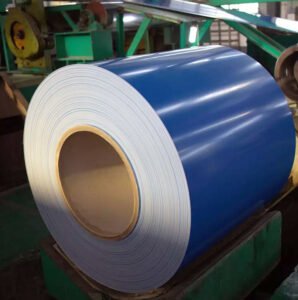
Introduction
Color coated aluminum coil is a remarkable material that not only provides exceptional durability but also offers a wide range of vibrant colors to enhance aesthetics. Its ability to combine functionality with visual appeal has made it a popular choice in various industries, including architecture, interior design, and manufacturing. This essay explores how color coated aluminum coil enhances aesthetics, enabling architects, designers, and manufacturers to create visually stunning and captivating structures and products.
Versatile Color Options:
Color coated aluminum coil opens up a world of possibilities when it comes to color selection. It offers a vast array of vibrant colors, shades, and finishes, allowing architects and designers to unleash their creativity and achieve their desired aesthetic vision. Whether it’s bold and vibrant hues or subtle and sophisticated tones, the versatility of color coated aluminum coil ensures that any design concept can be brought to life. The ability to choose from a wide spectrum of colors enables designers to match or contrast with existing color schemes, creating visual harmony or eye-catching accents.
Aesthetic Integration:
Color coated aluminum coil seamlessly integrates into various architectural and design styles, enhancing the overall aesthetics of structures and products. In the realm of architecture, it can be used for exterior cladding, roofing, and facades, adding a vibrant and modern touch to buildings. The availability of different finishes, such as glossy, matte, textured, or metallic, allows for further customization and the creation of unique visual effects. Color coated aluminum coil can also be used for interior design applications, such as wall panels, ceilings, and decorative elements, contributing to an atmosphere of elegance and sophistication.
Visual Contrast and Accents:
The vibrant colors offered by color coated aluminum coil can be used strategically to create visual contrast and accents, drawing attention to specific architectural features or design elements. By incorporating a bold color on a specific section or using contrasting tones, designers can create focal points and highlight the unique aspects of a structure or product. This technique adds depth and visual interest, making the design more captivating and memorable.
Durability and Longevity:
The aesthetic appeal of color coated aluminum coil is not limited to its vibrant colors alone. The durability and longevity of the material ensure that the aesthetic enhancements will last for years to come. The protective coating applied to the aluminum substrate not only provides vibrant colors but also acts as a shield against weathering, UV radiation, and chemical exposure. This ensures that the colors remain bright and vibrant over time, even in harsh environmental conditions. The fade-resistant properties of the coating ensure that the aesthetics of the design are maintained for an extended period, reducing the need for frequent maintenance and refurbishment.
Sustainable Design:
Color coated aluminum coil offers an aesthetic advantage beyond its vibrant colors. It is also a sustainable choice, aligning with the growing demand for eco-friendly design solutions. Aluminum is a highly recyclable material, and the use of color coated aluminum coil promotes a circular economy. Additionally, its lightweight nature reduces energy consumption during transportation and installation, further contributing to sustainability efforts.


Conclusion:
Color coated aluminum coil plays a vital role in enhancing aesthetics across various industries. Its versatile color options, aesthetic integration, visual contrast, and durability make it a preferred choice for architects, designers, and manufacturers seeking to create visually appealing structures and products. With its range of vibrant colors and finishes, color coated aluminum coil enables the realization of unique design concepts and adds a touch of elegance to any project. From architectural facades to interior design elements, this remarkable material continues to redefine aesthetics and elevate the visual impact of structures and products.